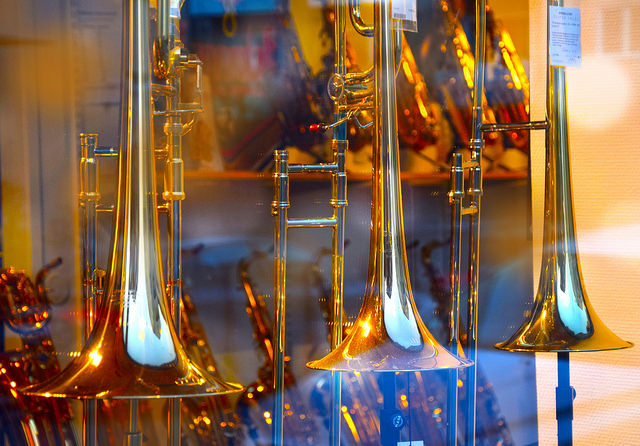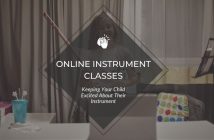 There are few things better than seeing a child – especially your own – excited about being a part of something bigger than themselves.
There are few things better than seeing a child – especially your own – excited about being a part of something bigger than themselves.
Bands and orchestras in school districts around the country provide this opportunity for children each and every year.
But you’ve got to get an instrument and there are a lot of questions to think through when it comes to obtaining your child’s first one. Arguably one of the most important is, “Should I buy an instrument, or should I look into renting one?”
We’ll do our best to help you discover which is best for you and your budget.
Here is a list of questions you’ll need to think through when deciding whether to rent or to buy your child’s musical instrument. We’ll break them down one by one –
- Is school music something my child is going to stick with?
- Is the instrument of decent quality for my child to succeed on?
- What comes with the instrument?
- How much does a typical instrument repair cost?
- How much would it cost me if the instrument is lost or stolen?
- What size instrument does my child need to start on? [string instruments only]
- What is the purpose of this instrument?
Is school music something my child is going to stick with?
Wouldn’t predicting the future be a great power to have? Unfortunately, I don’t know too many people who have that particular skill (though some mothers make me wonder…).
By the time your child is in fourth or fifth grade, they’ve likely started and stopped many activities. For most, it’s hard to know whether the school’s band or string program is something they will stick with or give up on.
If you know exactly what to look for, then buying an instrument from a neighbor or relative may not be a bad way to go. Of equal validity would be a good rental program, especially one where your payments count toward purchase.
If you rent and your child does not continue for whatever reason (we don’t like talking about “quitting” around here), you can return the instrument.
This means you won’t have something cluttering up closet or attic space and collecting dust. More importantly, it means you won’t be out all the money you would otherwise be out if you had purchased. In some cases, that could mean saving hundreds of dollars.
Is the instrument of decent quality for my child to succeed on?
Instruments are like anything else –
You get what you pay for.
There are a lot of instruments out there we like to call, “Instrument-Shaped Objects,” or ISO’s. You’ll find them at department stores and online. Even some small local music stores don’t take the importance of quality instruments seriously.
They have really attractive price tags, and may even come in interesting colors (green trumpets, pink violins, etc.).
However, they’ll fight your child every step of the way.
They are made of inferior materials and are sometimes even shorter than a standard instrument. This effects the player’s ability to stay in tune.
Children playing ISO’s won’t have a fair shot at staying in the band or orchestra. They’ll always be frustrated, wrong, and look bad in front of their teachers and peers. To make matters worse, they won’t always be able to tell if the instrument is the problem or if it is something they’re doing wrong.
Again, this is where renting can save the day.
While you may not be able to afford to purchase a good quality instrument, you likely can afford to rent one. Again, if you rent and the payments count toward its purchase, that’s the best case scenario.
How much does a typical instrument repair cost?
If you have a child who takes great care of their possessions, this may not be as big of a deal to you. Regardless, there will come a point where the instrument will need repair work.
Repair costs vary in different parts of the country. However, you’ll likely be looking at $40-$75 to put the average instrument back in playing condition if standard repairs are necessary.
This may happen 1-3 times a year, depending on how careful they are with it, how often they play it, if they use their care-kit to keep it clean, and so on.
A good rental program, on the other hand, will include a maintenance plan that will cover standard “wear & tear”, at no additional cost. Some will even cover accidental damage, though few, if any, will cover malicious damage.
How much would it cost me if the instrument is lost or stolen?
While it might be easy for most of us to say, “this will never happen to me,” the reality is that it does happen.
It’s unfortunate, to be sure. But encountering these sorts of issues is one of those “facts of life” that just has to be dealt with sometimes.
In most cases, a lost instrument that was purchased means one of two outcomes –
- buy another instrument (hundreds of dollars – again! yikes!)
- have your student quit (ugh…that dreaded word again)
If it’s stolen, you may be looking at similar issues unless you were wise enough to cover the instrument on your homeowners insurance. Even then, you have to deal with the insurance company, and who knows how that will turn out?!
It could be months before you have an instrument back in your child’s hand, which could lead to them getting behind and frustrated.
If you look into rental programs, find one that covers loss or theft and you’ll never have to worry about it. In that case, the music store will simply get you another instrument to continue renting with.
What size instrument does my child need to start on? [string instruments only]
Because most students in beginning orchestra start on what are called “fractional-size instruments” (1/2-size or 1/4-size, for example), it is rarely beneficial to purchase a string instrument when getting started.
When a string instrument is rented from a reputable company, they will allow you to exchange it for the next size up as your child grows. In the case of a rental that’s counting toward purchase of a full-size instrument, the credit will carry over from one size to the next.
Sometimes you can find groups to join where each member will buy their starting instrument and exchange sizes with others in the group. This is highly dependent on being able to find such a group in your area, and your desire to take on that kind of risk yourself. A guarantee from a reputable music store carries much less risk.
What is the purpose of this instrument?
It’s important to understand why you’re getting this instrument for your child, and what the future may or may not hold.
What do I mean by that? Let me explain…
There are different “levels” of instruments, just like many other things. Let’s imagine this on a continuum:
Student Instruments
The student instruments on the left are all about helping a beginner figure out if band or orchestra is for them. It will help them get their first notes most easily, and will also be durable as they learn to handle it.
For those students in band, once they decide that band is for them – usually after that first year – then it’s time to move on to an intermediate instrument.
For orchestra students, once they have grown enough to need a full-size instrument and have decided that orchestra is what they want to invest their efforts in, then it would be time for them to move up to a higher quality instrument, as well.
*Special Note – Many people think using an ISO in place of a student instrument is ok. The problem is that ISO’s don’t fulfill the purpose of a student instrument: to help the child decide if being a part of the music program is for them. In fact, it only hinders this purpose, as explained earlier.
Professional Instruments
At the other end of the spectrum are the professional instruments, built for optimum tone-quality (how good the instrument sounds) and ease of play. You’ll find many different features on these instruments that provide a number of different benefits to the player.
We recommend that late high-school or early college students who are serious about majoring in music consider moving to a professional instrument. In most cases, it will be required, anyway.
Intermediate Instruments
In the middle, we have the intermediate, or “step-up” instruments. These are the instruments that begin to incorporate the major features that improve the tone-quality and ease of play. They will also maintain some of the durability of the student instruments.
Some examples of this would be wooden clarinets (rather than resin/composite), silver trumpets, or open-hole flutes. One of the most visually obvious is the f-attachment on the trombone.
The purpose of the step-up instrument is to provide the basic features necessary to sound great. It also makes difficult aspects of playing the instrument easier.
If you buy your child a student-level instrument, it could be difficult to spend more money to move them up after that first year or two. Many rental programs, however, will allow you to use some of the rental credit from your student-level rental toward a step-up. This could make the transition much more affordable.
Conclusion
What other questions would you find important to ask? Let me know in the comments…it will help everyone make an informed decision.
photo credit: “Instrument” by Maria Eklind is licensed under CC BY-SA 2.0





2 Comments
I think, If you’re planning on playing the instrument long-term, then buying might be the better option since you’ll eventually save money. However, if you’re not sure how long you’ll play or if you might want to try a different instrument later on, then renting might be a better option. Renting also gives you the chance to try out different instruments before committing to one.
Thanks Ryan Ruff ! For sharing this information.
Thanks for commenting, Olivia! Your perspective is appreciated…